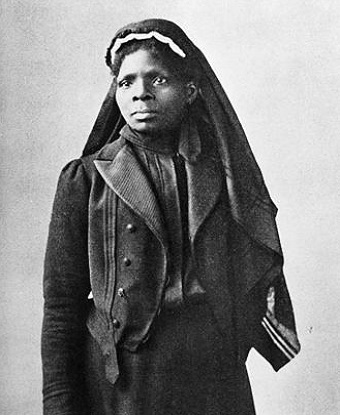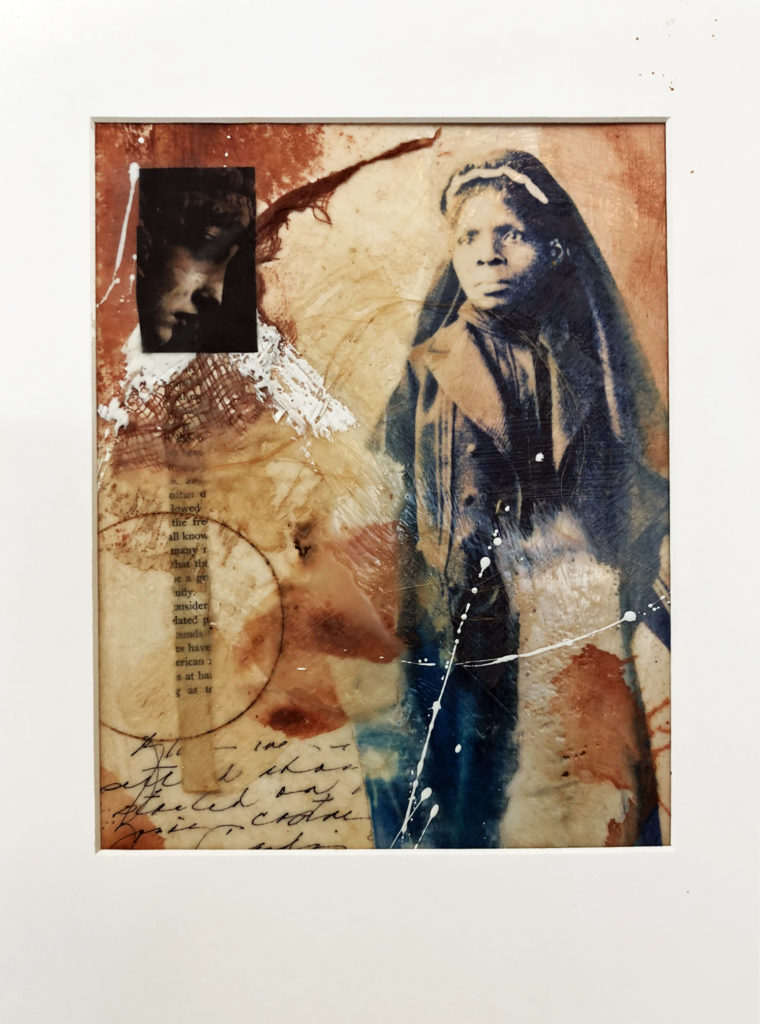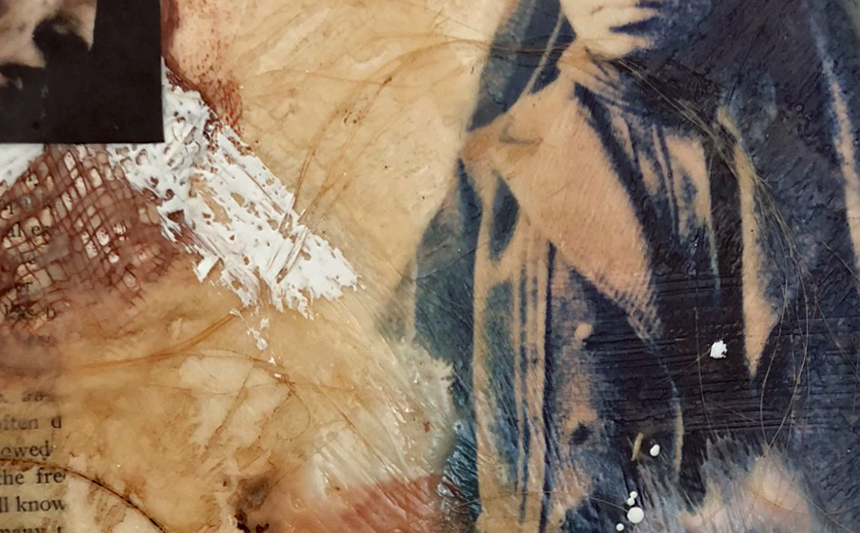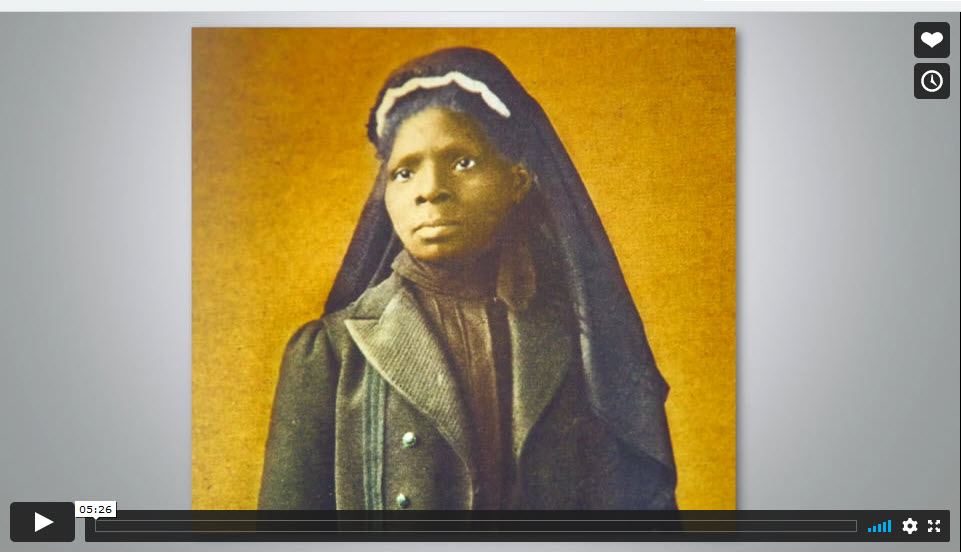
Upcoming Black History Month is the perfect time to share what I have learned about a remarkable woman named Susie King Taylor.
Several months ago, I was looking thrugh old photos in the archives of the Library of Congress and saw this one. Sometimes, images reach out like a compelling force, and this was one of them. What a presence!
After I learned that her name was Susie King Taylor, I started researching her remarkable life, then used her image to inspire an artwork.

Born into slavery in Georgia in 1848, Susie King Taylor (born Susan Baker) lived on a plantation for the first seven years of her life. In 1855, Susie was allowed to go live with her free grandmother in Savannah. Despite Georgia’s harsh laws prohibiting formal education for African Americans, Susie attended two secret schools taught by black women and was tutored by two white youths.
In April 1862, Susie was able to escape slavery with her uncle and other African Americans who fled to a federal gunboat near Confederate-held Fort Pulaski. She went to live on Union-occupied St. Simons Island off the southern Georgia coast along with hundreds of other formerly enslaved refugees. There, at only 14 years old, Susie became the first black teacher to openly educate African Americans in Georgia.
That same year Susie married Edward King, a black officer in the 33rd United States Colored Infantry Regiment, and began serving as a nurse and laundress for his regiment. Off hours she taught the soldiers reading and writing and, according to her memoirs, “…learned to handle a musket very well…and could shoot straight and often hit the target.”

Susie served as a nurse at a hospital for African American soldiers in Beaumont, South Carolina, where she met and worked with Clara Barton. For four years and three months, she served the Union military without pay. Susie and Edward remained with the 33rd Regiment until they were mustered out at the end of the war. (Source)
Susie King Taylor’s autobiographic book, Reminiscences of My Life in Camp, was written in 1906 and is still in publication. I ordered her book and was transported by her wisdom and graciousness. She is a skilled and objective writer.

I was compelled to use her striking mage in an encaustic mixed-media collage, which was recently included in an article in the Winter 2020 issue of Encaustic Arts magazine.
In the article, I wrote, “In one of my latest pieces, the subject is a striking African American woman. As usual, I knew nothing about her until her photograph almost leaped out at me from the screen as I was looking through Library of Congress for inspiration. She was identified in the photograph as Susie King Taylor, and through research I learned that she was the first Black Army nurse. During the Civil War, she tended to the all-Black 33rd United States Colored Infantry Regiment. In my encaustic collage titled Susie, I included gauze and horsehair as material symbols of her life in the regiment.”

You can see the gauze and horsehair embedded in the beeswax layers in this detail. I used colors of indigo and sepia as the primary palette:

As always, photos and stories from the past continue to inspire and fascinate me as inspirations for my work. Susie’s story was one of the best discoveries I’ve made.
If you’d like to learn more about her, please watch this brief video about the life of Susie King Taylor, produced by the Georgia Women of Achievement when she was inducted in 2018. You’ll be glad you did.
See you next time, and take good care,
Lyn

